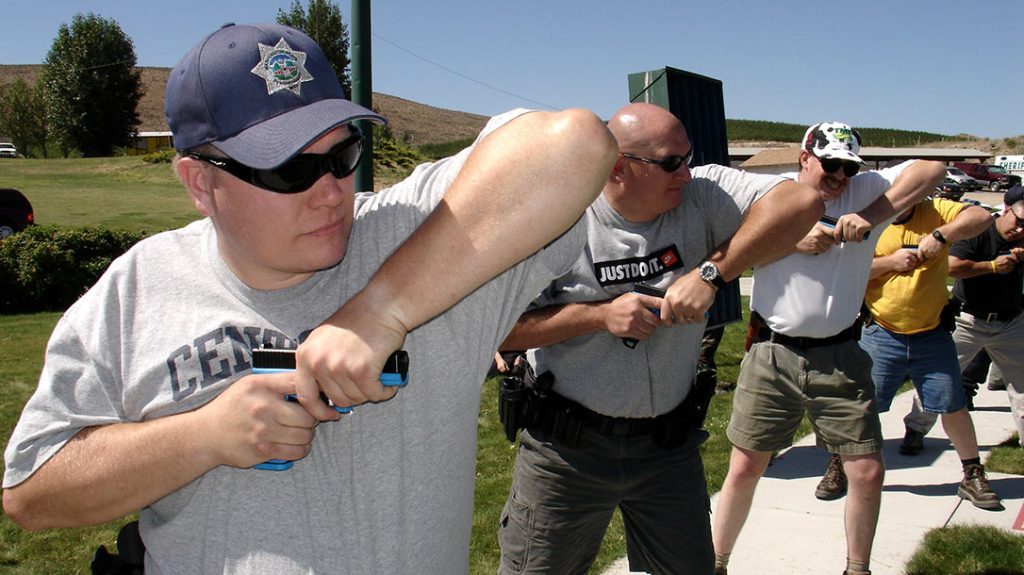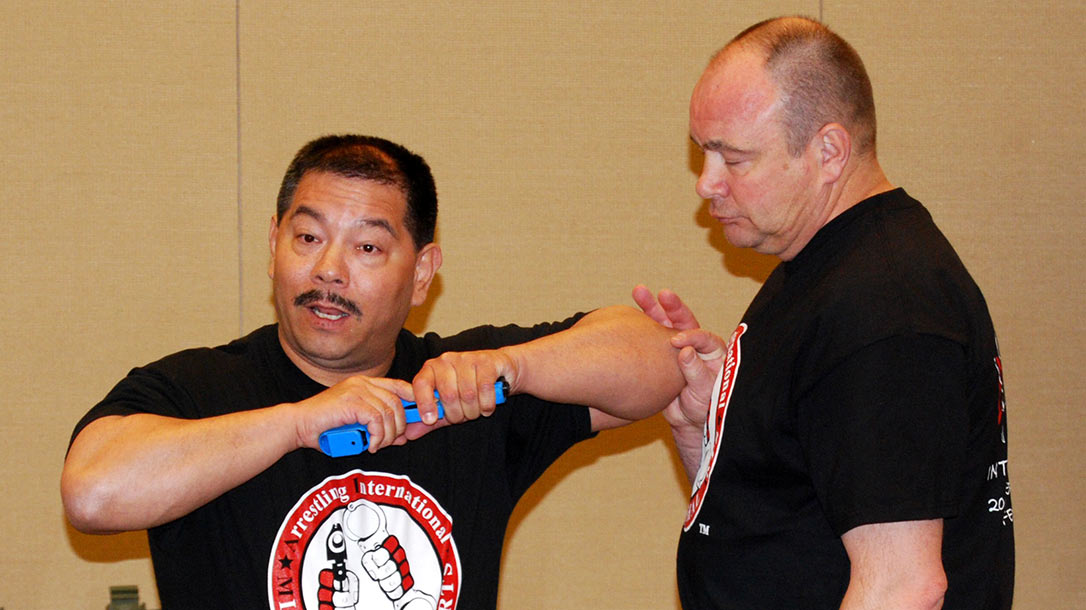“Weapon retention should be near the top of the list of things to learn. A bad guy doesn’t have to have a gun if he can just get yours.” – Don Gulla. This should be foremost in your mind whenever you are engaged in arresting a suspect. Whether you are in law enforcement or a civilian carrying concealed, in every confrontation, there’s a gun involved.
Never Lose Your Weapon During Arresting Procedures
A veteran SWAT officer, Don Gulla was serving as a police training instructor in 2002 when tragedy struck his agency.
An officer from Gulla’s King County, Wash. Sheriff’s Department was killed when a suspect grabbed for his holstered gun. As the pair wrestled over the weapon, a good Samaritan attempted to intervene by striking the suspect. When the officer and suspect separated, the gun came loose. It landed right next to the suspect, who picked it up and shot the officer.
Advertisement — Continue Reading Below
It was one of three such shootings of Washington law enforcement personnel within an 18-month span. Gulla said all three officers were killed with their own weapons. It was particularly frustrating for him.
With a lifetime of wrestling, boxing, judo, and kickboxing experience, Gulla knew what officers should be learning to protect themselves during arresting procedures or initial contact. Unfortunately, his hands were tied in what he could officially teach them.
“What used to be mandated for defensive tactics was very scripted. Things like Aikido were big, and when you practiced the moves in the academy, they weren’t done with resistance. So, no one had ever pressure tested them to see if they really worked,” said Gulla.
Advertisement — Continue Reading Below
Arrest+Wrestling=Arrestling
The trio of deaths finally prompted the state to revise its defensive tactics program for law enforcement officers. Gulla was in the best position to help make the revisions. He’d been working on solving these problems with a private training group since 1990, developing an arresting program he calls “Arrestling.” He said, historically, one of the biggest hindrances has been that firearms and combatives specialists are siloed from each other.
“Combatives trainers will tell you to solve a problem with your hands. Firearms trainers will tell you to solve it with a gun. But how many can integrate these things together?” he asked rhetorically.
Ideally, you’d like to stop an attacker before they can get their hands on your weapon. At one time, reaching out and fending off an attacker off with your weak hand while drawing was taught. But Gulla said trouble arose from people placing their weak hand in front of the muzzle and shooting themselves.
Advertisement — Continue Reading Below
The defensive elbow method of bringing your weak hand to your head and leading with that elbow as you draw then gained favor. However, the problem, said Gulla, is that you’re still trying to do two things at once.
“These things look cool but have never been tested in real situations. Firearms guys developed these techniques on the range, but they’re not typically defensive tactics specialists. I haven’t seen one video of them ever being done successfully by a police officer,” he said. “Now imagine the average person trying to do it. Many won’t even get a chance to practice the movement live fire because their range won’t allow them to draw from the holster.”
G-Wrap it Up
Instead of warding off an attacker striking at you while simultaneously drawing, Gulla recommends first moving into a clinch position. From there, you’ll work to control their body while placing yourself where you can safely draw your weapon. To master this, you’ll likely need some form of standing grappling instruction to learn the basics of clinch fighting.
Advertisement — Continue Reading Below

But what happens when an attacker does manage to get their hands on your gun, whether you’re arresting them or just engaging them? This can cause a myriad of problems, including the gun going out of battery where it won’t fire for you. In the worst case, your gun can be taken away and used against you. To combat this, Gulla developed what he calls the “G-Wrap” technique.
It’s a fairly simple but very effective counter to a gun grab. When the attacker grabs the slide of your pistol, simply grab close to the muzzle with your free hand. You’ll now have two hands on the gun while the attacker, frequently, will just have one hand on it.
Advertisement — Continue Reading Below
“By controlling the muzzle, I maintain control of where the gun is pointed. Even the smallest person can hold on to a gun this way with two hands versus one. And it takes you from a defensive position to an offensive position,” said Gulla.
One method to attack from here is to throw both elbows windmill style while keeping your hands on the gun. Knees and trips are also useful from this position. If it’s a long gun you’re wrestling over, you may have enough distance to employ kicks as well.
Advertisement — Continue Reading Below
But Gulla cautions against using rear leg power kicks where you may end up thrown off balance. Instead, straight, front-leg kicks to the groin, hip, or pelvic girdle can work for you.
Shrouded in Mystery
But even if you retain control of your pistol, the problem of the gun going out of battery still remains. You may get off one shot, but the gun will then be useless until you can clear any malfunction.
Gulla, along with his business partner, Rick Molina, have come up with their own unique solution to that problem. They’ve developed a product called the Combat Shroud. It’s a slim, U-shaped device that wraps over your slide and will lock onto a light rail beneath. It doesn’t touch the slide, so it won’t interfere with its motion. But if someone grabs your gun, they won’t be able to affect the slide’s motion, either.
Advertisement — Continue Reading Below
“It will allow you to fire multiple rounds on an attacker even if they grab your gun. But it’s not a replacement for training, it’s an enhancement,” said Gulla. “You need to develop the ability to crossover between firearms and combatives. Just doing live fire at the range teaches you to put accurate rounds on target from a stable shooting platform. But that doesn’t always match the reality of the street.”
To learn more about Arrestling, please visit Arrestling.com. To learn more about the Combat Shroud, please visit PredatorDefense360.com.
Advertisement — Continue Reading Below
























